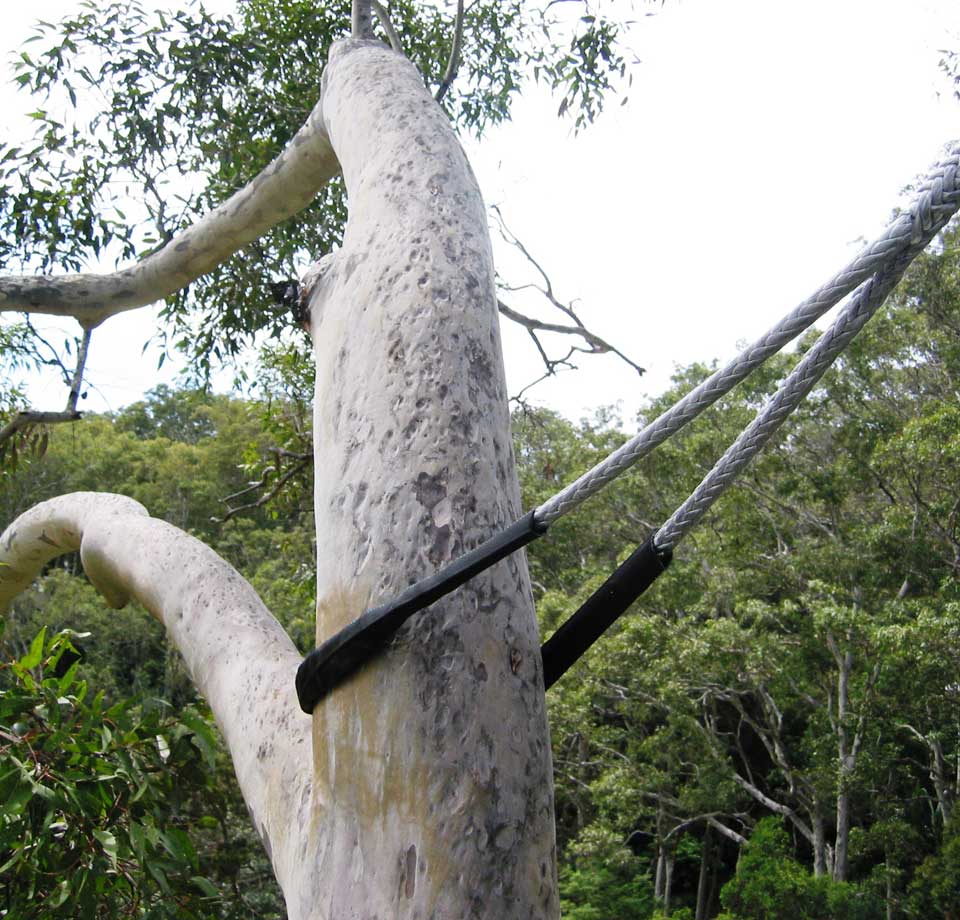Hurricanes are destructive natural events that can cause significant damage to trees. The high winds, heavy rains, and flooding can lead to fallen trees, broken branches, and uprooted vegetation. Proper preparation and post-storm care help mitigate damage and maintain the health and safety of not only your trees, but also your community!
Hurricane Preparedness for Your Trees
Being prepared helps minimize hurricane damage to your trees. Before hurricane season hits, ensure your trees are in the best possible condition to withstand strong winds and heavy rains.
- Regular Inspections: Conduct regular inspections of your trees to identify any signs of disease, decay, or structural weaknesses. Pay particular attention to large, mature trees and those close to your home or other structures.
- Healthy Soil: Maintain healthy soil around your trees. Well-drained soil helps support strong root systems and decrease chances of tree uprooting. Avoid soil compaction and ensure proper mulching.
- Watering: Keep your trees well-watered, especially during dry periods. Proper hydration helps trees remain healthy and resilient.
Pruning is Vital to Hurricane Damage Prevention
Proper tree pruning and trimming can help reduce the risk of damage by removing weak or dead branches that are more likely to break off in high winds.
- Remove Dead or Diseased Wood: Regularly remove dead, diseased, or damaged branches. These are the most likely to break off during a storm and can cause further damage to the tree or surrounding property.
- Thin the Canopy: Thinning the canopy allows wind to pass through more easily, reducing the overall wind resistance. Focus on removing branches that cross or rub against each other, as well as those that grow inward.
- Reduce Overextended Branches: Long, overextended branches are more susceptible to breaking. Prune these branches back to a lateral branch or the main trunk to reduce the risk of breakage.
- Crown Reduction: In some cases, a crown reduction may be necessary to reduce the overall size of the tree. This should be done carefully and preferably by a professional to avoid unnecessary stress on the tree.
Look for Signs of Tree Storm Damage
After a hurricane, inspect your trees for signs of damage so that you can address them and avoid further issues.
- Broken Branches: Look for branches that are broken, dangling, or partially detached.
- Split Trunks: Inspect the trunk for splits or cracks, indicators of structural damage that may compromise tree stability.
- Uprooted Trees: Check if any trees have been uprooted or have visible root damage. Uprooted trees may not be able to recover and can pose a risk of falling.
- Leaning Trees: A tree that is leaning more than usual after a storm may have root or structural damage. This can be dangerous and requires professional assessment.
Learn more about what to do if a storm damaged your tree!
Assessing Hurricane Tree Damage
Assessing the extent of hurricane damage to your trees helps determine whether a tree can be saved or if it needs to be removed.
- Extent of Damage: Assess how much of the tree is damaged. Minor damage, such as a few broken branches, may be easily repairable, while extensive damage might require more intensive intervention.
- Tree Health: Consider the overall health of the tree. Healthy trees are more likely to recover from storm damage than those that are already stressed or diseased.
- Structural Integrity: Evaluate the structural integrity of the tree. Trees with significant trunk damage, deep splits, or compromised root systems may be unstable and unsafe.
- Safety Hazards: Identify any immediate safety hazards, such as hanging branches or leaning trees. These should be addressed as a priority to prevent injury or further damage.

When to Restore a Tree After a Hurricane?
Not all storm-damaged trees need to be removed. In some cases, trees can be restored with proper care.
- Minor Damage: Trees with minor damage, such as a few broken branches, can often be restored through pruning and care. Remove damaged branches and ensure the tree receives adequate water and nutrients.
- Cabling and Bracing: For trees with structural issues but still viable, cabling and bracing can provide additional support. These techniques help stabilize the tree and prevent further damage.
- Fertilization: Applying fertilizer can help stressed trees recover by providing essential nutrients.
- Monitoring: Regularly monitor the tree’s recovery progress. Look for new growth and signs of healing.

When to Remove a Tree After Hurricane Damage
In some cases, tree removal is the safest and most practical option. Removing dangerous trees that are beyond repair can prevent future hazards and property damage.
- Severe Structural Damage: Trees with significant trunk splits, deep cracks, or severe root damage are often beyond saving and pose a risk of falling.
- Uprooted Trees: Trees that have been uprooted or have lost a significant portion of their root system are unlikely to recover and should be removed.
- Hazardous Leaning: Trees that are leaning dangerously after a storm are unstable and should be removed to prevent them from falling.
- Irreparable Damage: If a tree has lost a large portion of its canopy or has extensive damage that cannot be effectively treated, removal may be the best option.

Why Hire a Professional to Help with Tree Damage?
Professional arborists have the knowledge and experience to accurately assess tree damage and recommend the best course of action. Plus, dealing with damaged trees can be dangerous! Our team of Arborists have the proper equipment and training to safely remove or repair trees. We’re also fully insured, licensed, and certified so you can rest assured during the entire tree work process. Got damaged trees? Reach out to us for free assessments!





